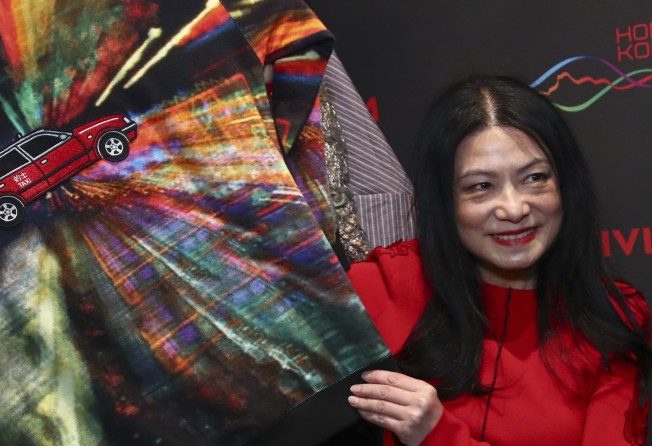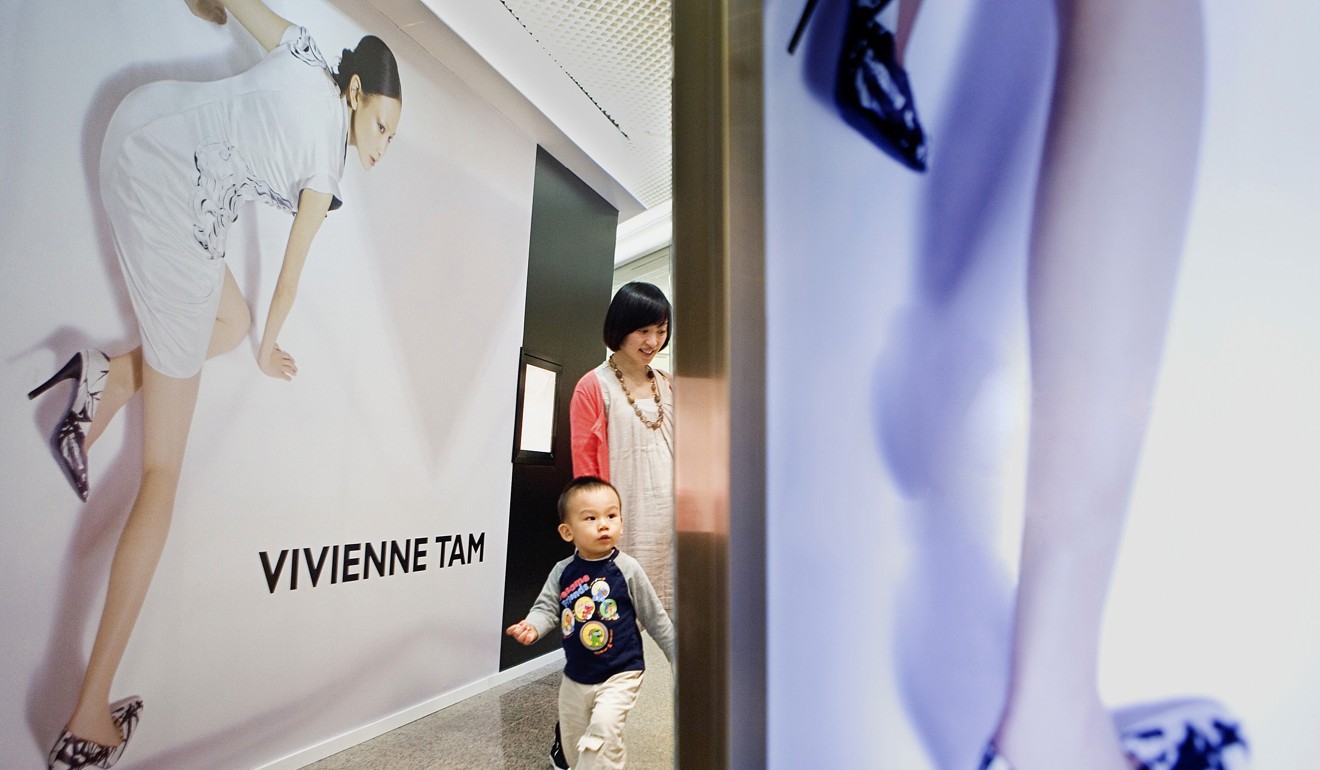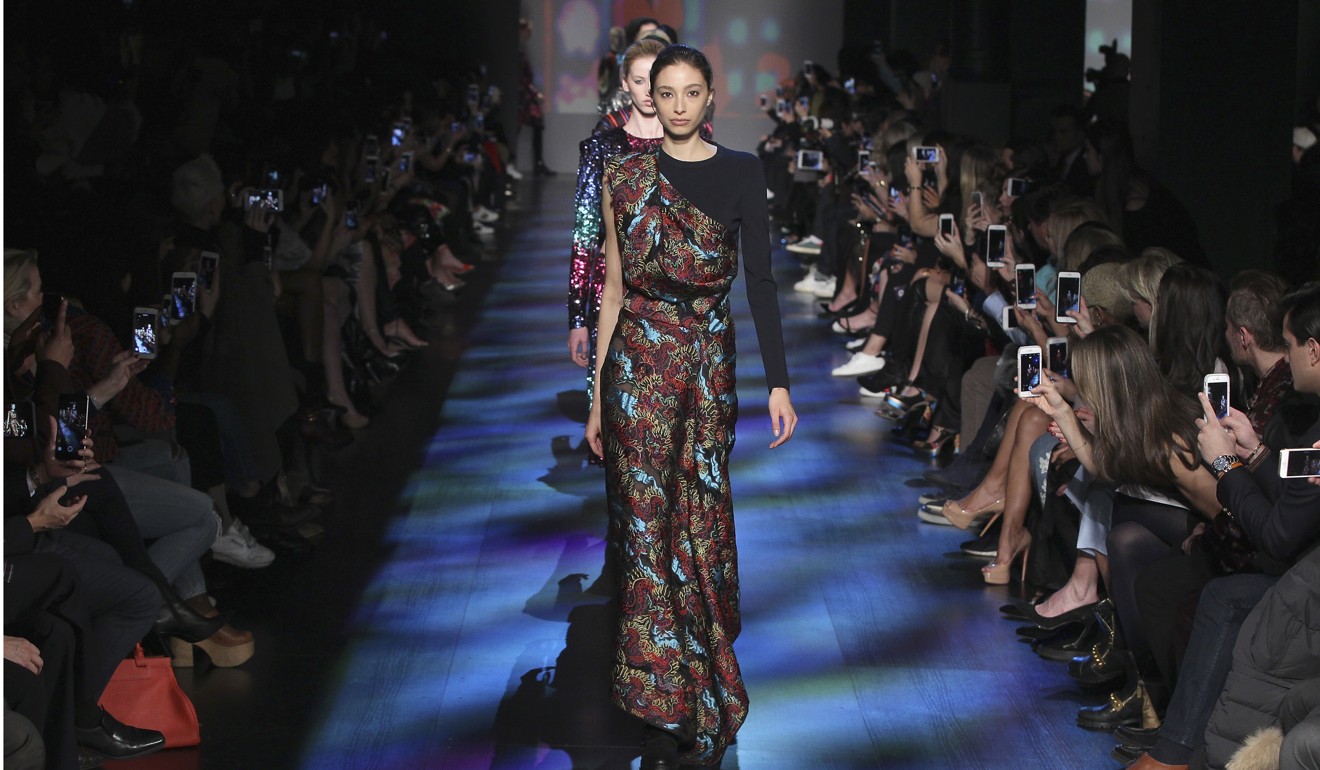
Hong Kong designer Vivienne Tam first China stores to open
China chic gets a boost as Shenzhen Ellassay Fashion buys China rights to Vivienne Tam and plans to open multiple stores around the country

Vivienne Tam, Hong Kong’s most famous fashion export, is looking forward to seeing her first stores opening in mainland China following the recent sale of China rights to her eponymous label to a Shenzhen-based company with ambitions of becoming a high-end fashion group.
“People have been asking me for years, “Vivienne, when are you going to open stores in China?’ Finally it’s here. This is another milestone, a new chapter for my brand … it’s taken many years, but it’s exciting. I’ve not been sleeping a lot lately.”
Business of Fashion reported last week that Shenzhen Ellassay Fashion had acquired the China rights to the Vivienne Tam brand for 37 million yuan (HK$43.32 million). The official announcement will be made at a press conference in Shanghai next Thursday.
Shenzhen Ellassay, which listed on the Shanghai Stock Exchange in 2015, has been on a shopping spree recently, having acquired Iro, a French contemporary brand, in March for 790 million yuan. That’s on top of a portfolio that includes China rights to German womenswear brand Laurel and American brand Ed Hardy, according to Business of Fashion.

The company will inject considerable financial investment into the Vivienne Tam brand, which started out in New York and made its name as one of the earliest champions of Chinese-influenced style on the US and global fashion circuit after the designer launched her eponymous label in 1994. Tam, who was born in Guangzhou and emigrated to Hong Kong at age three, has long lauded “China chic”, but never managed to open stores on the mainland, despite an attempt in 2008.
Now, Shenzhen Ellassay has grand plans to roll out shops around China, bringing Tam’s dream of becoming a household name in the country of her birth one step closer to reality.

The envisaged expansion of the label is ambitious – with a five-year plan aimed at having many stores all around the country. Since Ellassay is a public company, however, Xia is cautious about stating exact numbers. “We’re not going to blindly pursue numbers,” he says. “We’re paying more attention to the branding and quality of stores.”
The company wants to strengthen Tam’s core women’s ready-to-wear and accessories lines, but expansion into other categories such as menswear, home and lifestyle is definitely on the cards. The goal, she says, is that “we want to make a Giorgio Armani type brand, for China, a brand that is a household name.”
Even though Vivienne Tam China will be run independently by Ellassay on the mainland, and is a separate entity from Tam’s 23-year-old New York-based company, she’ll still be leading the creative team and design studio in China (which she’s now hiring for) when she visits their Shenzhen office – conveniently close to her existing Hong Kong base.
Tam is excited at the prospect of being able to utilise Ellassay’s “strong, organised” manufacturing facilities, resources and skills. And there’s no doubt that the big team Ellessay will build behind this China office will have an impact on the workings of Tam’s independent New York and Hong Kong offices.
“It will be a benefit to us, I’m sure,” she says. “We’ll see what will happen, but there’ll be changes.”
The designer is, however, adamant that her label won’t suddenly become just a Chinese brand: “It’s still a global brand,” she insists. New York remains her headquarters and it’s still very important for her to keep showing her collections at New York Fashion Week.

The deal between Ellassay and Tam had been under serious negotiations for more than a year, although she has known Xia for several years. Xia also started out as a designer before moving into the world of business, which is one reason they understand each other well, Tam says. Watching his company grow, she’s been impressed with the aggressive pace of its expansion.
“Vivienne Tam is a unique brand in the international arena. Her profile, image and visibility overseas will help the China brand and operations,” says Xia. “With the Chinese company, she will lead the soul and spirit of the young international design team, who’ll focus on products for the young Chinese consumer market.”
As for the design team that Tam will be building in Shenzhen, she hopes that “the creative energy will be much stronger as we work together”, to grow a new audience, and improve research and development on Chinese culture, aesthetics and craftsmanship.
“Before, maybe the timing wasn’t right,” Tam says of her unsuccessful attempt to open stores in mainland China almost a decade ago. She is philosophical about the situation, though. “It’s a different time now. The Chinese customer has changed so much and it’s actually better timing for me as a designer with a Chinese name. They accept me more now and the Chinese are really into Chinese name brands now.”

“Of course I always wanted to have Chinese stores, but it’s not always been possible,” says Tam. “I went to America to do my fashion line because in Hong Kong at that time people were always looking to the West. When I tried to come back to open stores, everyone told me ... ‘you won’t be successful’. And then when I did it in Hong Kong, they did really well. Things change – I believe that if you have a good product, people will buy from you.”
Tam still entirely owns her brand outside mainland China, and operates stores in Hong Kong, Japan, the Philippines, Thailand and Singapore; she runs an e-commerce site in the US, but recently closed her New York flagship boutique in the midst of America’s retail slump. With her new Chinese partnership, she says, the massive mainland market will soon become her biggest.
It’s much easier today to be a Chinese design name than when Tam started in the business decades ago, when people would just assume you were a manufacturer, not a creative. Young designers are lucky to be able to ride the current wave, she says.
“The platform is so much more open. Even in Hong Kong, there’s so much support and sponsorship from the government as well. The fashion world has turned towards the East more. There’s American-born Asian names like Alexander Wang and Phillip Lim, but now if you look at the New York Fashion Week calendar, there’s many more new Chinese names.”
With Tam finally on the threshold of selling her West-East aesthetic back to the Chinese, hopes are high for both Tam and Xia.
“Today, you see everyone lining up to buy LV, Chanel or Hermes on Canton Road,” Tam says. “Someday, I want to see people lining up to buy a Chinese named brand like Vivienne Tam as well. That’s my dream.”